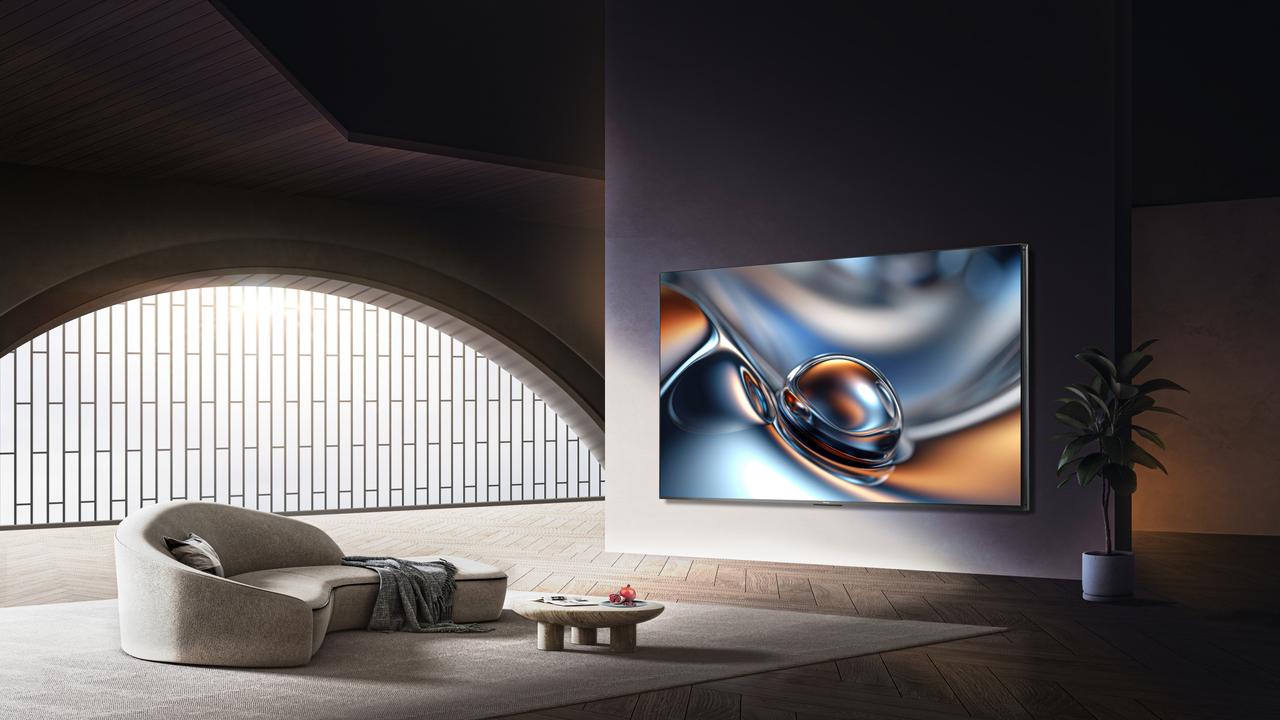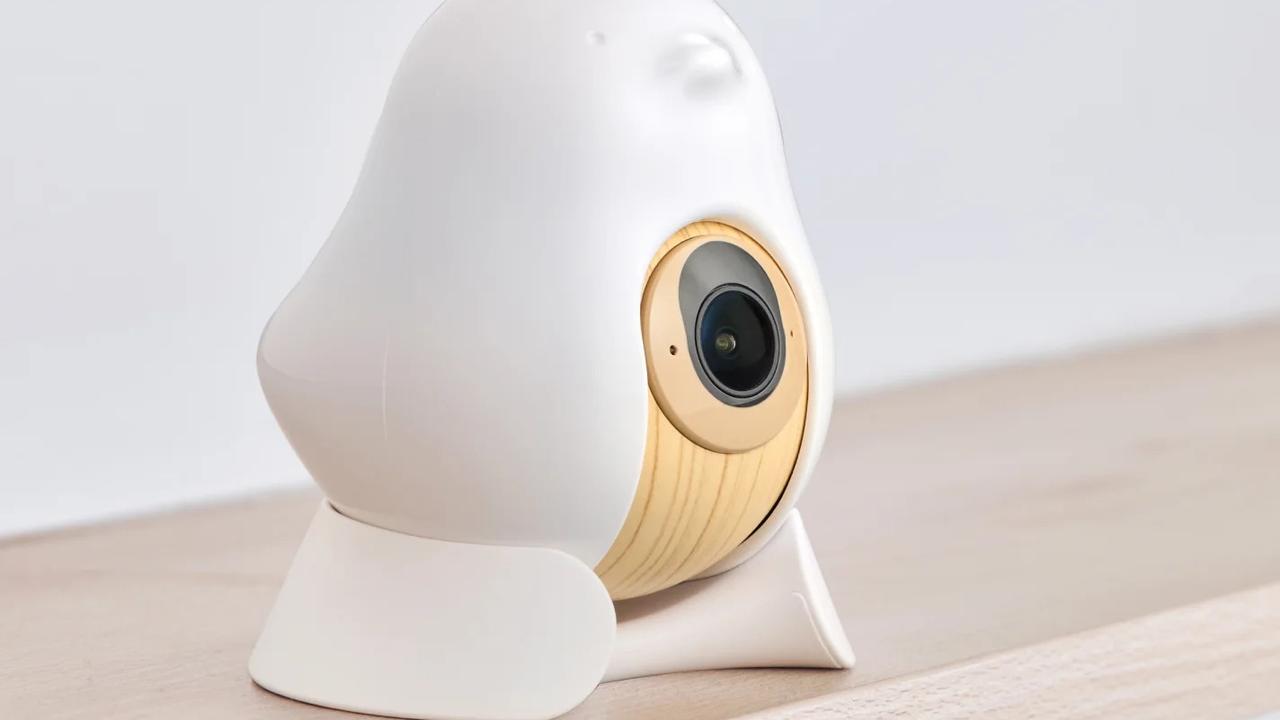Review: The Samsung 85-inch Neo QLED 8K TV takes a new approach to backlighting
Samsung’s flagship Neo QLED 8K TV takes a new approach to backlighting in a trend we’re starting to see across the market.
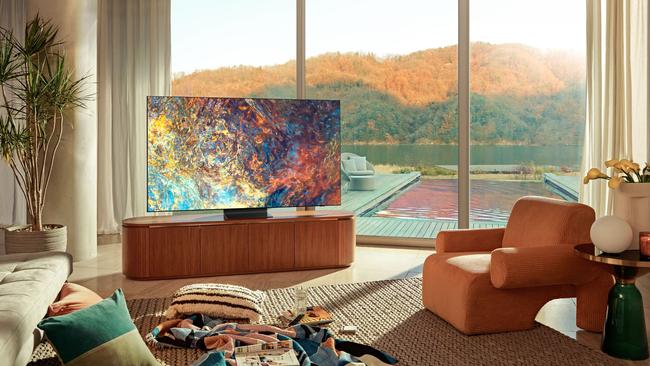
Samsung this month announced its Neo QLED TV range that takes a new approach to back lighting. I spent time with the flagship in this range, Samsung’s 85-inch Neo QLED 8K.
Instead of lighting the TV from the edges, or using backlighting zones on the back the size of a button, Samsung uses arrays of tiny “quantum mini LEDs” about 1/40th the thickness. It’s a trend we’re starting to see across the TV market.
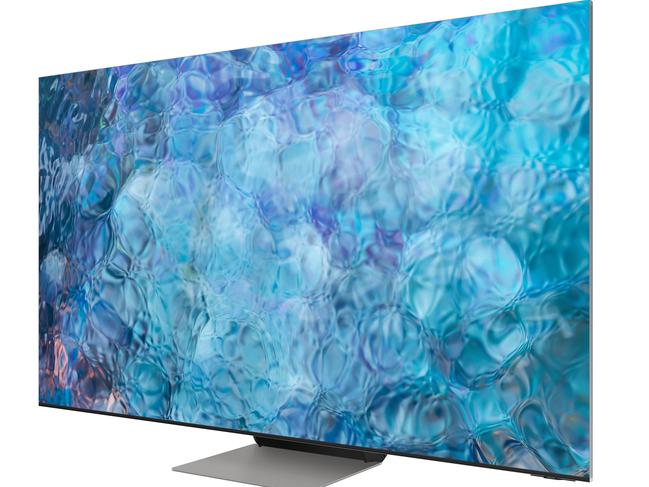
A small wafer a few centimetres across contains about 10,000 of these mini LEDs and offers finer control of the image. That’s the theory, so how good is it in practice?
There’s not much to say about the Neo’s appearance as it’s basically a big screen with a tiny 0.8mm border or bezel around it. The TV is supported by a small inconspicuous stand that you hardly notice. The TV is slightly raised so if you install a sound bar beneath it, you can’t see the stand at all.
Samsung has a new version of its one connect box which is wider but flatter. On this TV, it fits to the rear of the TV base and is out of sight.

All your connections to DVD players, gaming consoles and the power cable itself are made to this box and not the TV. This greatly reduces cable clutter. The one connect box has a single cable running to the TV which greatly simplifies wall mounts for starters. The cable includes power and the TV signal. There are 1 metre and 5 metre cable options.
The $64 question is the picture quality and it is superb. Stunning whites, pitch blacks, and sharply defined lines between them, no bleeding, just as you get with the more expensive OLED (organic LED) screens.
I took close-up photos of how text looks on this TV and compared it to an earlier photo of an LED – you can see the difference.
Vision is bright and colourful.

In my view 85-inches is about where an 8K set can be justified – when the screen becomes larger and the image is stretched. We hardly have any 8K content in Australia so the point of 8K is to upscale lower resolution content which is mainly 4K and full HD. The TV needs a good processor to do that.
4K content such as David Attenborough’s “Our Planet” looked exquisite. Vikings in HD upscaled to 8K was sharp. Decent HD quality isn’t something you can take for granted on a big 85-inch TV.
I watch AFLW Gold Coast versus Richmond and women’s international cricket – South Africa versus India on Kayo and it was very good quality for a live broadcast.
Samsung’s TV menu has a simple format. A row showing your favourite apps runs along the bottom row and recommended content appears above the app you are highlighting. Settings are at the bottom left. You can see the names of devices attached to the TV such as an Xbox One box when selecting content.
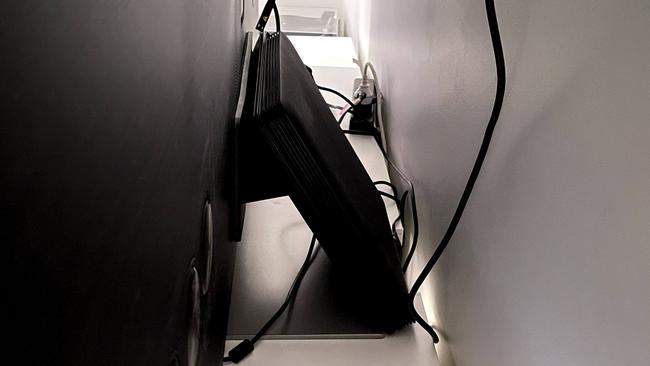
I found moving around menus to be fast except when exiting from a feature; there seemed a delay.
Source options include “PC on TV” where you can remotely access a PC on the display.
Samsung’s SmartThings’s capability lets you control Samsung SmartThings devices from your TV such as lights, air conditioners and other appliances.
There’s also “Multi View” where you can watch two games, or two events from different apps. I didn’t find this particularly useful as there didn’t appear to be many apps available for multi-view mode but I did watch two YouTube videos side-by-side.
You can vary how the two apps appear. You can have one app dominating the screen and the second app displayed in a smaller area or switch to picture-in-picture mode. You can watch one program while keeping an eye on the football, for example.
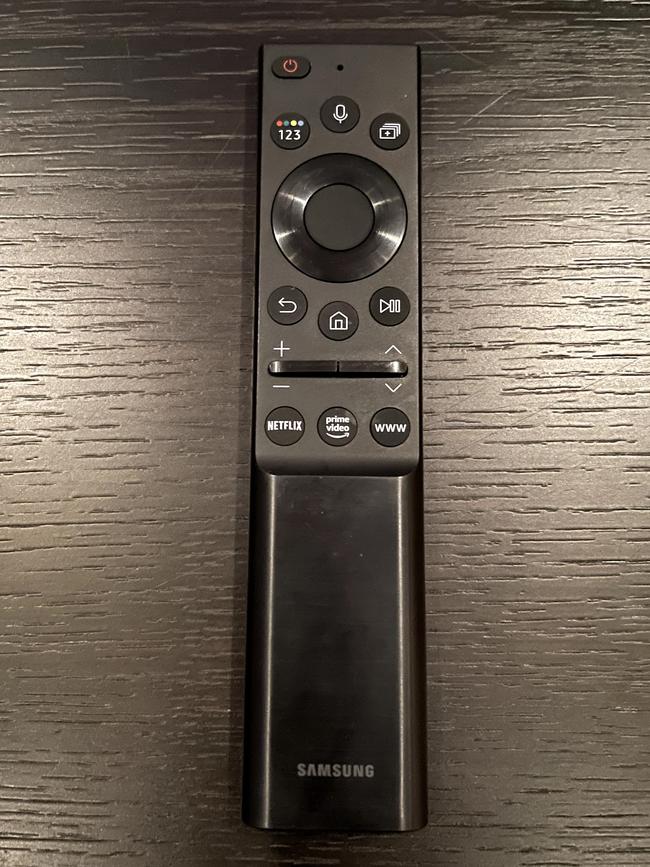
You can beam a Windows PC screen to the TV. You install an app on your PC/laptop to enable this. You can use Apple AirPlay to display the screens of Apple devices. You can also use Samsung DeX which turns the TV into a computer when you wirelessly link a Samsung Mobile device. You can perform collaborations with Microsoft 365, or access a cloud service from the TV screen.
I used an AirPlay connection to an iPad and the text was very bright; you might need to adjust the settings in this mode.
Search isn’t so fantastic on this unit. You search by either typing on the screen or by voice.
A search for Nicole Kidman (for which there should be plenty of content) returned YouTube videos, but I didn’t see movies with her on Netflix or on other streaming services available with the review set. Samsung says the TV can perform a global search but the licenses weren’t in place at the time of review.
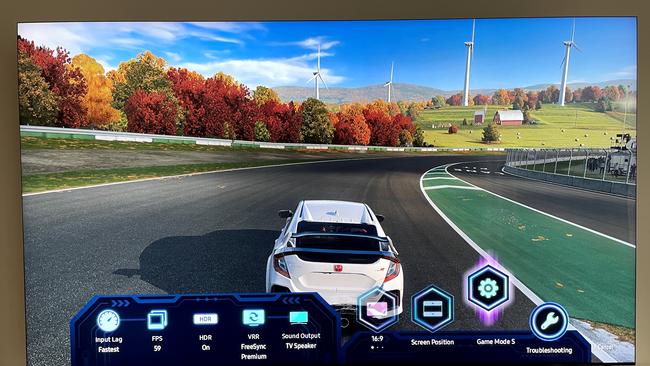
The TV uses the Google Assistant for voice control.
This TV offers special features for gaming. The review unit came with an Xbox One X and these days, you don’t need to physically switch the Xbox on; that’s done from the remote using the CEC (consumer electronics control) feature of HDMI.
When I played Forza 7 motorsports, the TV automatically switched into its game mode which enables additional functions. You can access a special menu when you press down on the play/pause button while gaming.
You can toggle HDR, see the frames per second rate, manage the sound output, change the screen aspect ratio, and, for wide angled games with PC gaming, move the screen position of the game up and down so that the position of the action is optimised with your sitting position.
The 85-inch 8K Neo QLED leads the Samsung range at $13,999. The 65-inch 8K Neo is $5599. You can get 4K Neo sets from $6399 for 75 inches down to $3379 for a 55-inch set.
-
Q950A sound bar
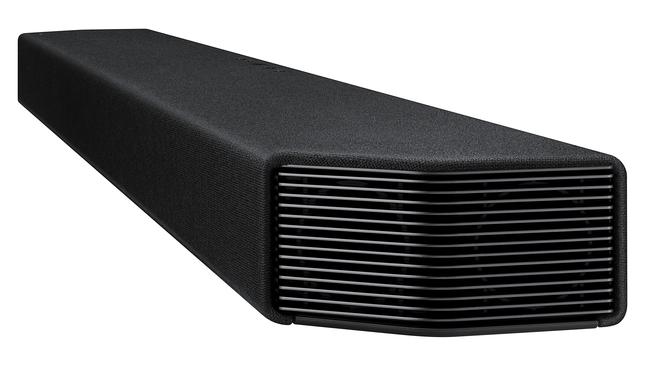
The Q950A turned out to be a highlight of this review. The sound system includes the bar and two wireless speakers which you position each side of your viewing couch, a tad behind you. Apart from excellent sound quality, it offers amazingly effective directional sound. Sound is not only rich, but loud. At 15/100, it was mighty loud enough and I feared the whole hotel I was in would erupt if I dared to turn it up to near 100.
Several brands offer spatial digital sound, and while I haven’t heard them all, I can say Samsung’s version is very well executed. This is however a very expensive speaker system – over $2000, but you get what you pay for.
I also tested listening to Spotify through this sound bar system. Audio separation between voice and orchestration is very good but you’ll need to tweak the settings to get the sound balance right. In my case, the orchestration drowned the vocals.
The Q950A system also is capable of synchronising with the TV sound system. At $2099 it is expensive, but there are other models. The Q-series ranges down to $799 and there’s even cheaper A-series, S-series and terrace speakers on offer.

